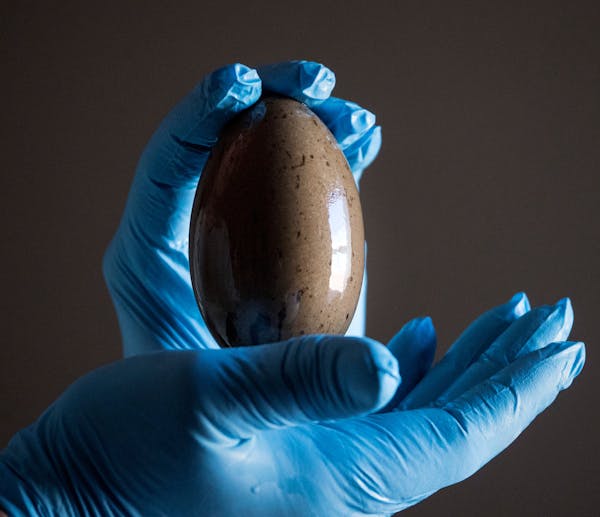Minnesota's loons have made it onto a national shortlist of conservation projects likely to be funded by an $18 billion fund established after the 2010 BP oil spill in the Gulf of Mexico.
Federal agencies overseeing the massive settlement announced Tuesday that the state's loon project made the final list of three they support to address damage done to ocean wildlife populations.
Minnesota's proposal would provide $7.5 million, primarily to improve and expand loon nesting habitat and create a public campaign to reduce the use of lead fishing tackle, the leading cause of loon deaths.
The proposals are open for public comment, and a final decision is expected within a few months.
Minnesota's plan succeeded in part because of research showing that 85 percent of Minnesota loons migrate to the Gulf every year, and that hundreds were killed from the spill, with many more probably poisoned by contaminants. The research was spearheaded by Carrol Henderson, the recently retired nongame wildlife leader for the Minnesota Department of Natural Resources (DNR).
Minnesota's beloved loon population — the largest in the U.S. — is stable with about 12,000 breeding adults. But wildlife officials say vital nesting areas face a growing threat from steady lakeshore development across the state that can pollute water, erase wild shorelines necessary for chick rearing and invite raccoons and other predators that attack nests.
Most of the money, which would be distributed over 15 years, would fund state purchases of Minnesota School Trust parcels on lakeshores in Itasca and Cass counties, which would be converted to permanently protected conservation land.
Research in Wisconsin found that loons stopped reproducing on lakes when shoreline development exceeded 25 buildings per kilometer, or about six-tenths of a mile.
The DNR manages 2.5 million acres of land for timber, recreation, mining and other sources of revenue dedicated to school funding, including some along lakeshores that have the potential for development.
Recent studies have found that loons congregate on deep-water lakes where they fatten up on ciscoes, a type of cold-water whitefish. Minnesota has about 650 lakes where cisco thrive, and which would be likely conservation targets for loons.
The plan also calls for recruiting some 40 lake associations each year to help install and monitor nesting platforms in appropriate lakes. Each association would also be asked to devise a loon restoration plan for its lake and conduct outreach and loon-focused public events.
The third piece of the plan would revive a public awareness campaign, operated by the Minnesota Pollution Control Agency from 2001 to 2010, urging people to reduce the use of lead fishing tackle. Studies have shown that replacing lead sinkers and jigs with nontoxic alternatives would provide an immediate boost to the loon population, according to the proposal. The program would include recruiting retailers and fishing groups to promote non-lead tackle, education through the DNR's Teach a Kid to fish program, and science classes in schools.
The committee overseeing distribution of the oil-spill funds, which includes representatives from multiple federal agencies, considered some 1,600 conservation proposals before settling on a final six.
It is recommending only three of them, including the Minnesota loon project.
The other two are $6.5 million for the restoration of black tern habitat in North and South Dakota, and $7 million to restore habitat for sturgeon along the Gulf Coast.
Three that are included in the report, but not recommended by the committee, are another sturgeon preservation project; a proposal to restore black terns throughout the Upper Midwest; and a plan to create island habitat for White Pelicans in the Mississippi River.
Staff Writer Tony Kennedy contributed to this story. Josephine Marcotty • 612-673-7394

University of Minnesota police arrest 9 after pro-Palestinian encampment set up on campus
2 dead in Lino Lakes, no known threat to public, police say
Teen charged with murder in deadly St. Paul shooting last month

